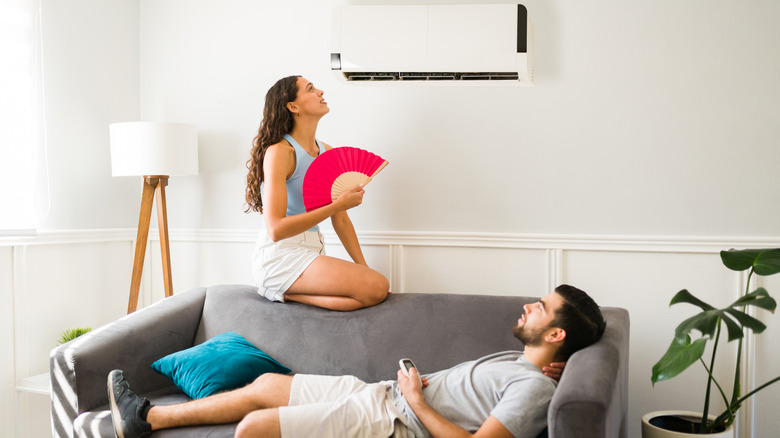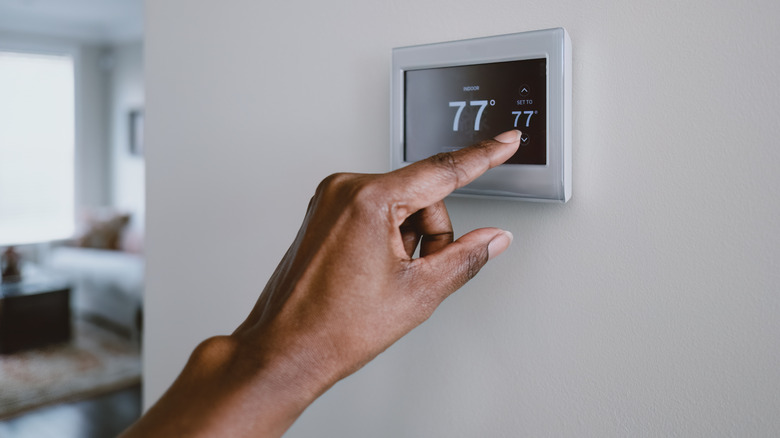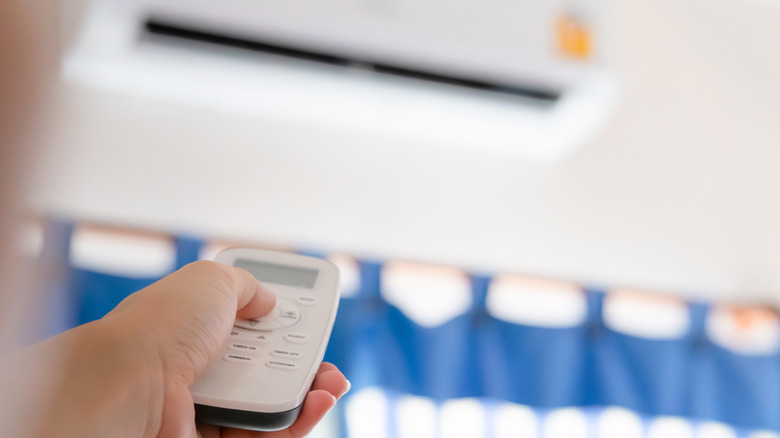The Biggest HVAC Mistake To Avoid Making In Extreme Heat & Why
During extreme heat waves, it can feel like it's too hot to think straight. Desperation may lead you to use and abuse your AC in the hopes it will cool the house down quicker, but there are some crucial mistakes you should avoid if you want to prolong the life of your HVAC system. House Digest spoke exclusively to Shawn Giffin, a virtual HVAC expert at Frontdoor, about the ways homeowners may be misusing their AC once the temperature outside gets too hot to handle. According to Giffin, the most common mistake is excessively lowering the thermostat temperature, which, instead of having the desired outcome, may just be overworking the equipment and putting a nasty dent in your pocket.
Setting your thermostat to an extremely low temperature "will not make the system work any faster or harder than it normally would," the expert explained, adding that it simply "forces the AC to never turn off, which can cause a plethora of problems." What happens is that "the system will just run longer, raising the electric bill, until it achieves that temperature."
How lowering the thermostat temperature affects your AC
In very basic terms, the way an AC works is that the indoor unit will remove warm air from the home, which is then absorbed and cooled down by a compound known as refrigerant and released back into the interior until the thermostat detects that the target temperature has been reached. If that target is impossible to reach or maintain, the system will just repeat these steps over and over, in the process sending your electric bill through the roof.
What's more, in her exclusive interview with House Digest, Giffin warned that "maintaining an indoor temperature of below 69 degrees [Fahrenheit] runs the risk of the unit freezing over," which can damage the compressor. This device pressurizes the refrigerant, increasing its temperature, so it can travel through the rest of the system and eventually create the pleasing chill air that comes out of the indoor unit. It's considered the heart of the HVAC system and the priciest to replace. The ideal thermostat setting to stay cool during a heat wave is 78 degrees Fahrenheit. This is a realistic temperature for your AC to achieve without excessive energy consumption and the danger of freezing over.
The healthiest way to use your AC during a heat wave
Besides keeping your thermostat at a sensible temperature, there are other steps you can take to ensure your HVAC system lasts a long time, your home is adequately chilled, and your energy spending is at its most efficient.
Run your AC on a schedule and never turn it off completely, recommended Giffin in an exclusive interview with House Digest. "Turning the system off completely may raise your indoor temperature and make it very hot, so your AC will have to run for a very long time to bring it back down to your desired temperature," she explained. When you're planning to be out of the house all day, it's best to set the thermostat at about 85 degrees Fahrenheit, which will keep the temperature in your home reasonably controlled, without straining the equipment, and won't demand as much of an effort to bring it back down once you return.
Additionally, since the healthy 78-degree setting may not offer enough relief in a heat wave, Giffin suggested "other ways to reduce the amount of heat entering your home." Consider "using blinds and curtains to block the sun from heating the home through windows and keeping doors and windows closed as much as possible." Finally, to ensure your HVAC system is working efficiently by the time the going gets tough, don't forget to perform regular maintenance throughout the year. "Make sure the air filters are clean to avoid making your AC work harder and potentially freeze up," Giffin cautioned.


